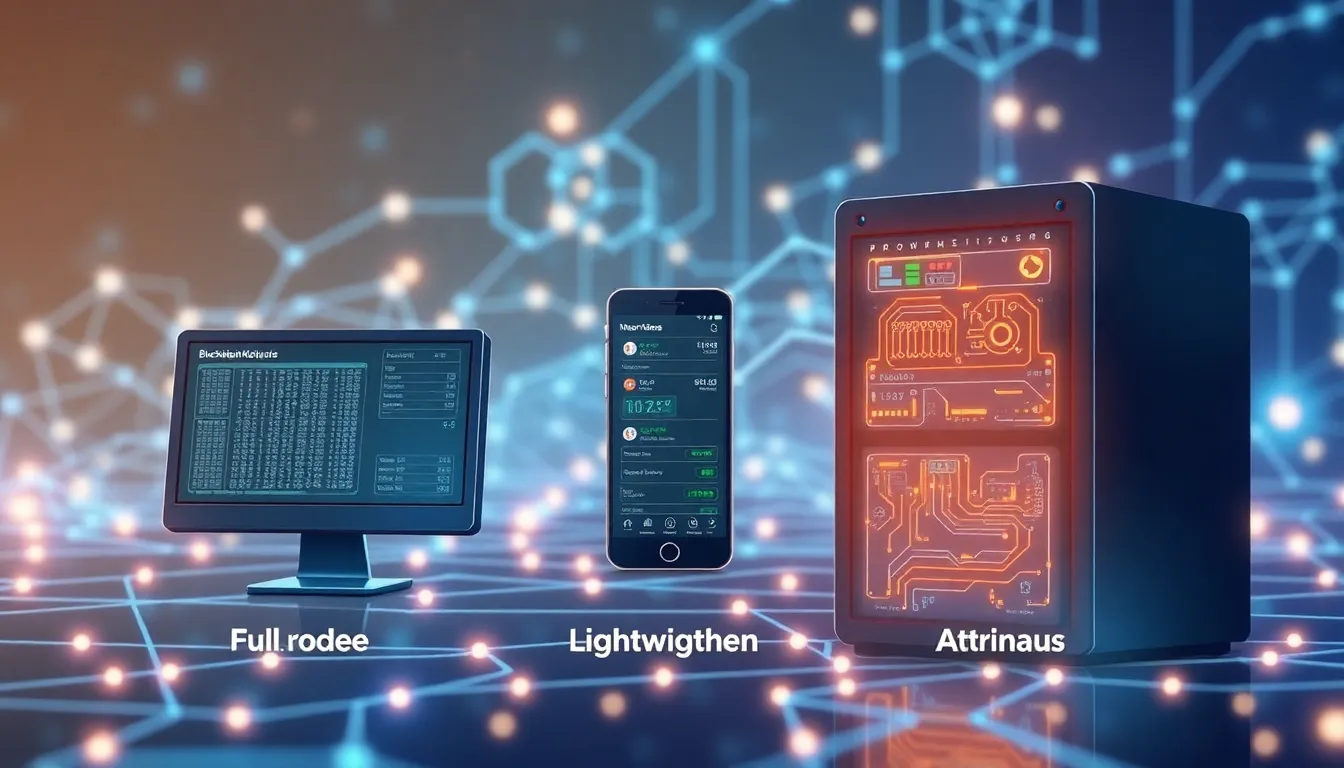In the world of blockchain technology, nodes play a crucial role in maintaining the integrity and functionality of the network. A node refers to any computer that participates in the blockchain, either by storing a copy of the entire ledger or by validating transactions. Understanding what a node is and how it operates is essential for grasping the fundamentals of blockchain.
Nodes can be categorized into different types, each serving a unique purpose within the network. From full nodes that maintain complete copies of the blockchain to lightweight nodes that rely on others for data, they all contribute to the decentralized nature of blockchain. This decentralized architecture not only enhances security but also fosters transparency, making blockchain a revolutionary technology in various industries.
What Is a Node in Blockchain?
A node in blockchain refers to any computer actively participating in the network. Nodes serve crucial roles, including storing the entire ledger or validating transactions. They contribute to the distributed, decentralized framework that enhances blockchain’s security and transparency.
Types of Nodes
- Full Nodes: Full nodes store the entire blockchain ledger, maintaining a complete history of all transactions. They validate incoming transactions and blocks, ensuring network integrity.
- Lightweight Nodes: Lightweight nodes, or SPV (Simplified Payment Verification) nodes, do not store the entire blockchain. Instead, they rely on full nodes for transaction validation, while saving storage space and processing power.
- Master Nodes: Master nodes provide additional functions, such as facilitating governance and offering services like instant transactions. They usually require a significant investment in the cryptocurrency of their respective networks.
- Mining Nodes: Mining nodes contribute to the creation of new blocks by solving complex mathematical problems. Successful miners receive rewards in the form of cryptocurrency.
Importance of Nodes
Nodes enhance blockchain’s decentralization, which mitigates risks associated with central points of failure. Each node has a copy of the ledger, allowing for transparency and security. In the event one node fails, the network continues operating smoothly due to the redundancy provided by other nodes. This structure fosters trust among users, making blockchain a reliable technology for various applications.
Types of Blockchain Nodes

Different types of blockchain nodes play essential roles in maintaining the network’s efficiency and security. Each node type contributes uniquely to the overall functionality of the blockchain ecosystem.
Full Nodes
Full nodes store the entire blockchain ledger and independently validate all transactions and blocks. By doing so, they ensure transparency and security within the network. Full nodes verify the legitimacy of transactions based on consensus rules and participate directly in the network’s operations. Their independence enhances decentralization by eliminating reliance on third parties, thus reducing the risk of fraud or manipulation.
Lightweight Nodes
Lightweight nodes, or SPV (Simplified Payment Verification) nodes, do not store the entire blockchain. Instead, they download only the block headers, allowing users to verify transactions without extensive storage or processing power. Lightweight nodes rely on full nodes for transaction validation, making them more resource-efficient. They’re ideal for mobile devices and applications where storage capacity and battery life are limited while still providing access to the blockchain network.
Miner Nodes
Miner nodes, or mining nodes, specifically engage in the process of creating new blocks by solving complex cryptographic puzzles. These nodes contribute to the blockchain’s security by ensuring that only valid transactions are added to the ledger. Miner nodes compete to find the solution first, incentivized through block rewards and transaction fees. Their computational power enhances the network’s resilience against attacks, making them crucial for maintaining the stability and security of the blockchain.
Functions of Nodes in Blockchain
Nodes play crucial roles in the functioning of blockchain networks. Their contributions involve validating transactions, ensuring network security, and managing data storage.
Transaction Validation
Transaction validation occurs through the efforts of nodes, particularly full nodes and mining nodes. Full nodes independently verify the authenticity of transactions by checking them against the entire blockchain ledger. Mining nodes contribute by solving complex mathematical problems, confirming the accuracy of grouped transactions before adding them to the blockchain. This dual approach enhances overall transaction integrity, ensuring that only legitimate transactions get processed.
Network Security
Network security relies significantly on the actions of nodes. Each node maintains a copy of the blockchain, which strengthens network resiliency against attacks. If a node detects any discrepancy or fraudulent activity, it can reject the invalid data, preserving the integrity of the entire network. Decentralization achieved through numerous nodes further mitigates risks, as attackers face significant challenges in targeting multiple nodes simultaneously.
Data Storage
Data storage is primarily managed by full nodes, which keep complete copies of the blockchain. This comprehensive storage facilitates easy access to historical transaction data, contributing to transparency and auditability. Lightweight nodes also store limited data, focusing on block headers; this arrangement optimizes resource usage, allowing users with limited processing power to participate actively. Together, these storage strategies support the overall efficiency of the blockchain ecosystem.
Importance of Nodes in the Blockchain Ecosystem
Nodes play a vital role in the blockchain ecosystem, ensuring functionality and security across the network. Each type of node contributes uniquely to the integrity of the blockchain.
- Transaction Validation: Full nodes and mining nodes primarily handle transaction validation. Full nodes independently verify transactions against the entire blockchain ledger, promoting transparency. Mining nodes confirm grouped transactions by solving complex cryptographic puzzles, adding layers of security to the system.
- Network Security: The decentralized nature of nodes enhances network security. Each node maintains a copy of the blockchain, complicating potential attacks. This redundancy makes it significantly harder for malicious entities to alter transaction data or disrupt network functionality.
- Data Storage: Full nodes manage complete copies of the blockchain. This comprehensive data storage enables quick access to historical records. Lightweight nodes, in contrast, optimize resources by storing only essential data, which suits devices with limited processing power.
- Governance and Services: Master nodes provide governance capabilities and additional services within the blockchain network. These nodes enable decision-making processes, support network upgrades, and offer various functionalities that improve network performance.
- Efficiency: Nodes collectively enhance efficiency within the blockchain ecosystem. Their interactions enable faster transaction processing times and reduce operational costs while maintaining overall network integrity.
Nodes are indispensable for ensuring that blockchain technology operates reliably, efficiently, and securely in various industries.
Conclusion
Nodes are the backbone of blockchain technology. They ensure the network remains secure and decentralized while facilitating transaction validation and data storage. Each type of node plays a distinct role in maintaining the integrity of the blockchain, from full nodes that store complete ledgers to lightweight nodes that optimize resource use. Master nodes contribute governance and additional services, while mining nodes enhance security by creating new blocks. The collaborative functions of these nodes create a robust ecosystem that supports the transformative potential of blockchain across various industries. Understanding their importance is key to appreciating how blockchain operates efficiently and securely.















